Growing mushrooms in the garden can increase your vegetable yields, help with pest management, and increase the food you harvest from the space. Mushrooms are a perennial crop that can give you a perpetual harvest for years to come. They are easy to plant from a kit or from plugs. Here’s how to get started.
Gardening and growing your own food is a good way to ensure that your family has food security, this winter and beyond. While not everyone has the space for a full garden there are ways to grow some of your own food even without garden space. Some of these ways are by growing sprouts and microgreens in your kitchen, or growing herbs in containers on a balcony or near your back door. We also have seven more tips for growing your successful vegetable patch.
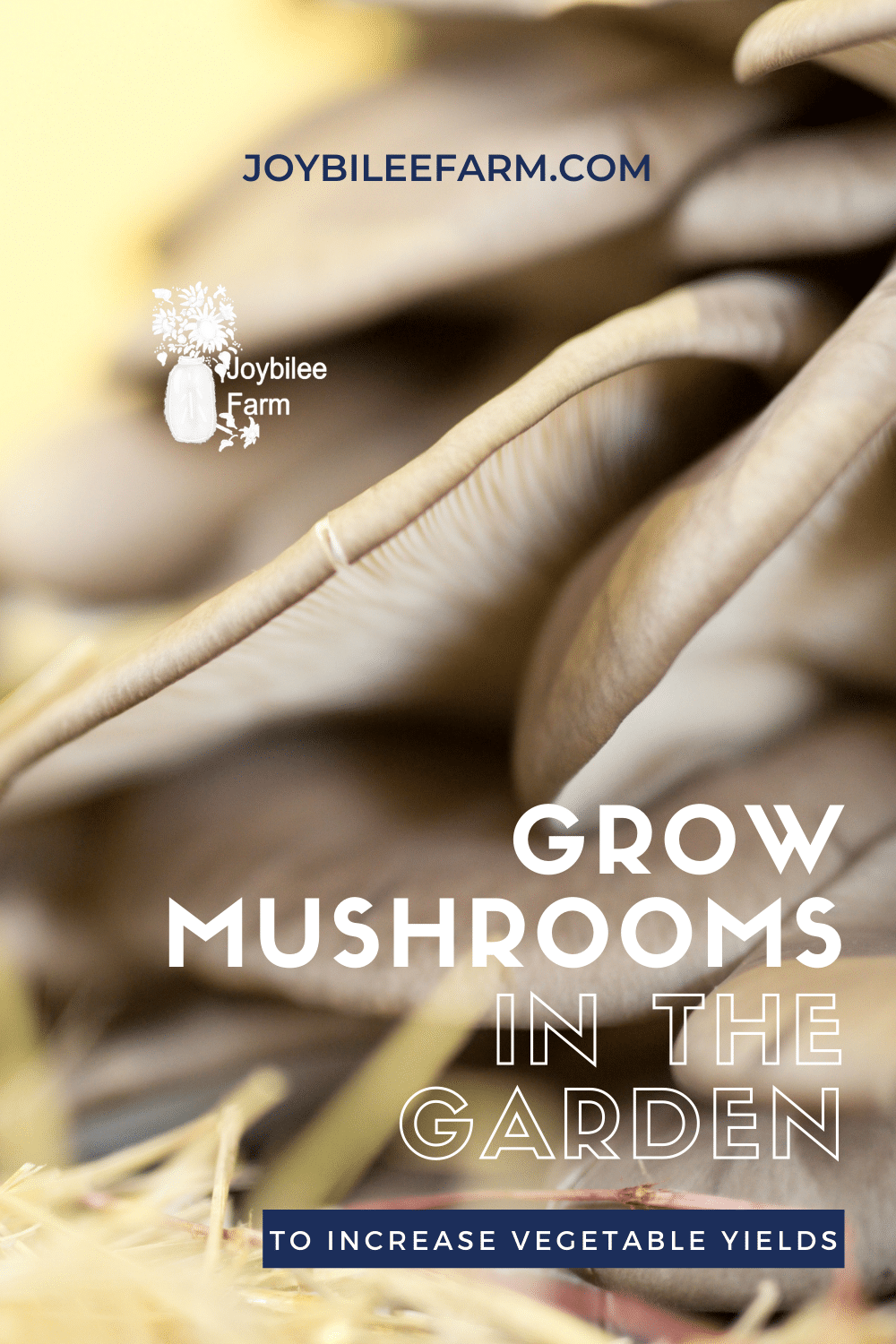
Another way is by growing mushrooms in the garden. Mushrooms can be grown on logs on a balcony, in a grow bag in a spare bedroom, or even directly in your garden. Mushrooms are shade tolerant, so you can add them under fruit trees or even directly into the mulch in your vegetable beds. You can also grow them in full sun, provided that you water then regularly to keep the substrate damp while the mycelium is colonizing it.
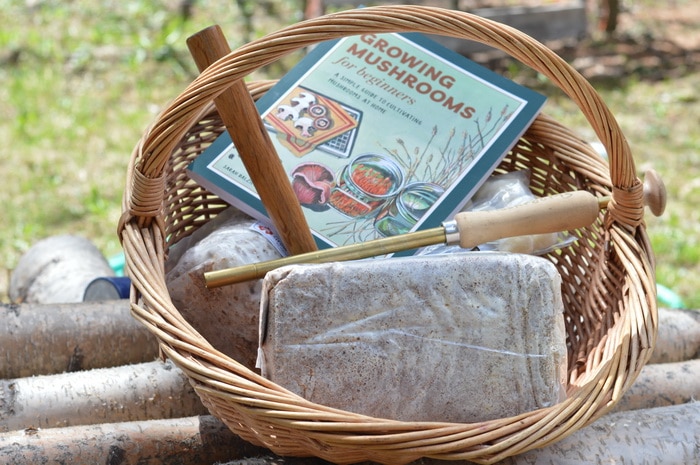
How to plant mushrooms in the garden
You can get started growing gourmet mushrooms in the garden with a mushroom grow kit or with mushroom plugs. Which you choose depends on how you want to grow your mushrooms. Mushroom grow kits are usually made on a combination of grain and sawdust and are the most versatile, allowing you to grow in straw bales, in mulch, or even in logs with the right tools. Mushroom plugs are easier to use but limit you to growing mushrooms on logs.
To use a mushroom grow kit to colonize an area of straw mulch, simply break apart the kit and mix the mycelium throughout the straw or sawdust mulch, breaking up large clumps as much as you can. Once you’ve thoroughly mixed the mycelium into your mulch, water the mulch deeply. Keep it damp. The finer the mulch the faster it will colonize with your mushroom mycelium and the sooner you’ll see mushrooms popping up in the mulch. Use 1 mushroom grow kit (4 pounds) per 40 to 50 square feet of garden area.
The mushroom mycelium has to fully colonize the grow medium or substrate before the fruiting bodies form. These are the mushrooms you are waiting for. The mushrooms are a sign that the mushroom mycelium have run out of “food” and fully colonized the straw mulch. Wait till after you harvest the mushrooms before you add more mulch to the area.
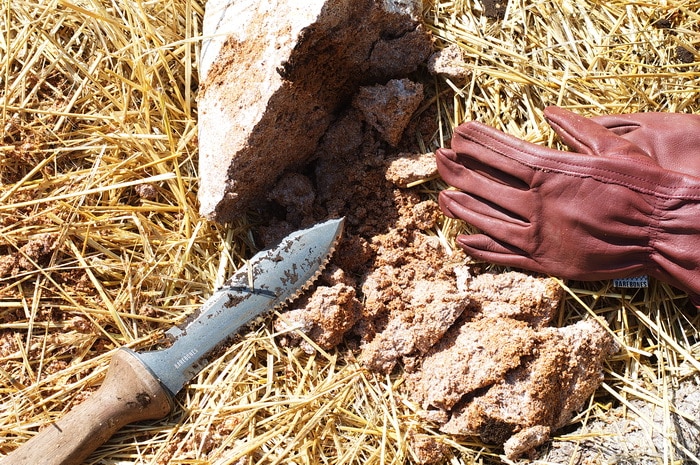
Grow mushrooms in the garden for a perpetual harvest
Once you get started growing mushrooms, you can keep the mushrooms growing in your garden perpetually by increasing the grow-medium and allowing their mycelium (mushroom roots) to keep colonizing and fruiting the grow-medium. A mushroom log can give you 3 to 5 years of mushroom harvest, before it is used up. While straw or sawdust mulch should be renewed annually after you harvest the mushrooms, for a perpetual harvest that lasts for years.
This year I’m adding oyster mushroom mycelium to the straw mulch right in my garden beds. The mycelium will increase the amount of minerals and moisture available to my vegetables, increasing vegetables yields. Once the straw mulch is fully colonize, when temperatures and moisture levels are right in the fall, I’ll be harvesting oyster mushrooms from this garden bed, as well as vegetables. In this way I’ll get more food from the same garden space.
Which mushrooms to grow in the garden
The best mushrooms to grow in your garden are oyster mushrooms (Pleurotus sp.) and wine cap mushrooms or garden giant (Stopharia rugoso-annulata)
There are several different oyster mushrooms to choose from. I’m growing golden oyster mushrooms, blue oyster mushrooms, and regular oyster mushrooms in different garden beds right in the straw mulch. There are many more kinds of easy to grow oyster mushrooms to choose from, too. Which you choose depends on the growing conditions you have including ambient temperatures and relative humidity. If you live in a pine forest like I do, there is even one kind of oyster mushroom that will grow on pine sawdust — the Phoenix oyster mushroom.
It’s important to give each kind of mushroom its own space to grow, so that the mycelium doesn’t have to compete for growing space. You can do this by giving each type of mushroom, its own raised bed or container, or simply by separating the areas in your garden with a 2 foot path that doesn’t have mulch. However, if there is mulch on your garden paths, that can be another good spot for growing mushrooms in the garden. Fungi want to grow in your garden, so you may as well introduce the gourmet mushrooms you actually want to grow there.
I also added a ring of straw mulch and coffee grounds around the drip line of one of my apple trees and added more oyster mushroom mycelium right into the mulch there. It’s important to keep this mulch damp to ensure that the oyster mushroom mycelium can colonize freely. The shade from the apple tree will help keep this moisture from drying out too quickly.
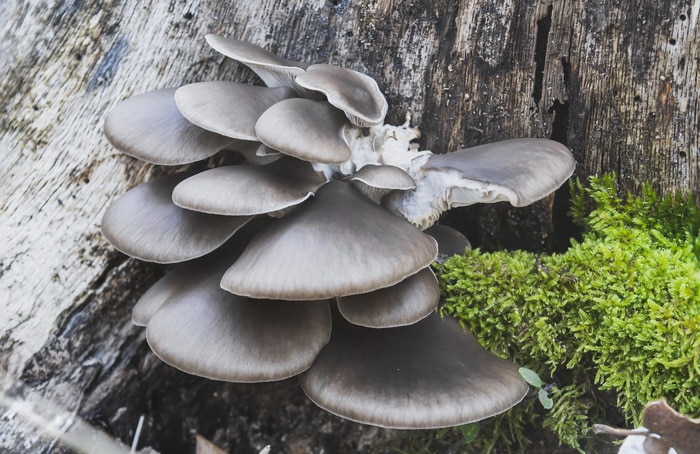
In the fall, when I’m harvesting apples, I’ll also be able to harvest gourmet mushrooms in the garden from this spot. Once the straw and coffee ground mulch begins to fruit, I will be able to carry this mulch to other parts of my garden and colonize more mulch with oyster mushrooms, spreading these oyster mushrooms throughout the garden. This will give my a perpetual harvest of mushroom and fruit from the same garden space.
Growing wine cap mushrooms in the garden
Mushrooms are not affected by juglone — the plant chemical from walnut family trees that stops other plants from growing. In fact, wine cap mushroom mycelium eat up the juglone, neutralizing it. If you accidentally planted an apple tree close to a walnut tree, putting a ring of wine cap mushrooms around the drip line of the walnut may help stop the juglone from killing your apple trees.
Wine cap mushrooms are aggressive colonizers that also kill root nematodes, and can increase the nutrients getting to your other plants. Once the mulch is colonized, we’ll be harvesting wine cap mushrooms, without increasing the garden space we have.
And like the oyster mushrooms, I’ll be able to spread this myceliated mulch around my garden and create colonies of wine cap mushrooms in other areas of the garden, as well — greatly expanding the food my garden can produce, without expanding my garden.
You can learn more about using mushrooms in the garden to help your other plants grow, as well as growing mushrooms for food, in our new book, “Growing Mushrooms for Beginners“. (Rockridge Press, 2021) Written by my daughter, Sarah Dalziel-Kirchhevel, for Joybilee Farm, Growing Mushrooms for Beginners can help you grow mushrooms at home for food and medicine, using whatever space you have — whether you have a garden or just a balcony or a spare bedroom.

Learn more about growing mushrooms in the garden
Sarah’s new book, Growing Mushrooms for Beginners, A Simple Guide to Cultivating Mushrooms at Home, is available on Amazon and Barnes and Noble. In this concise resource Sarah guides you step by step through growing mushrooms on logs, on straw, on wood chips in the garden, or even in Mason jars in your kitchen. The book includes instructions for growing seven mushrooms including shiitake, oyster, lions mane, garden giant/wine cap, and more. Learn the unique characteristics, flavors, health benefits, and specific growing requirements for each mushroom as well as space saving tips and recipes to get the most out of your mushroom harvest.
Get your copy of Growing Mushrooms for Beginners now.



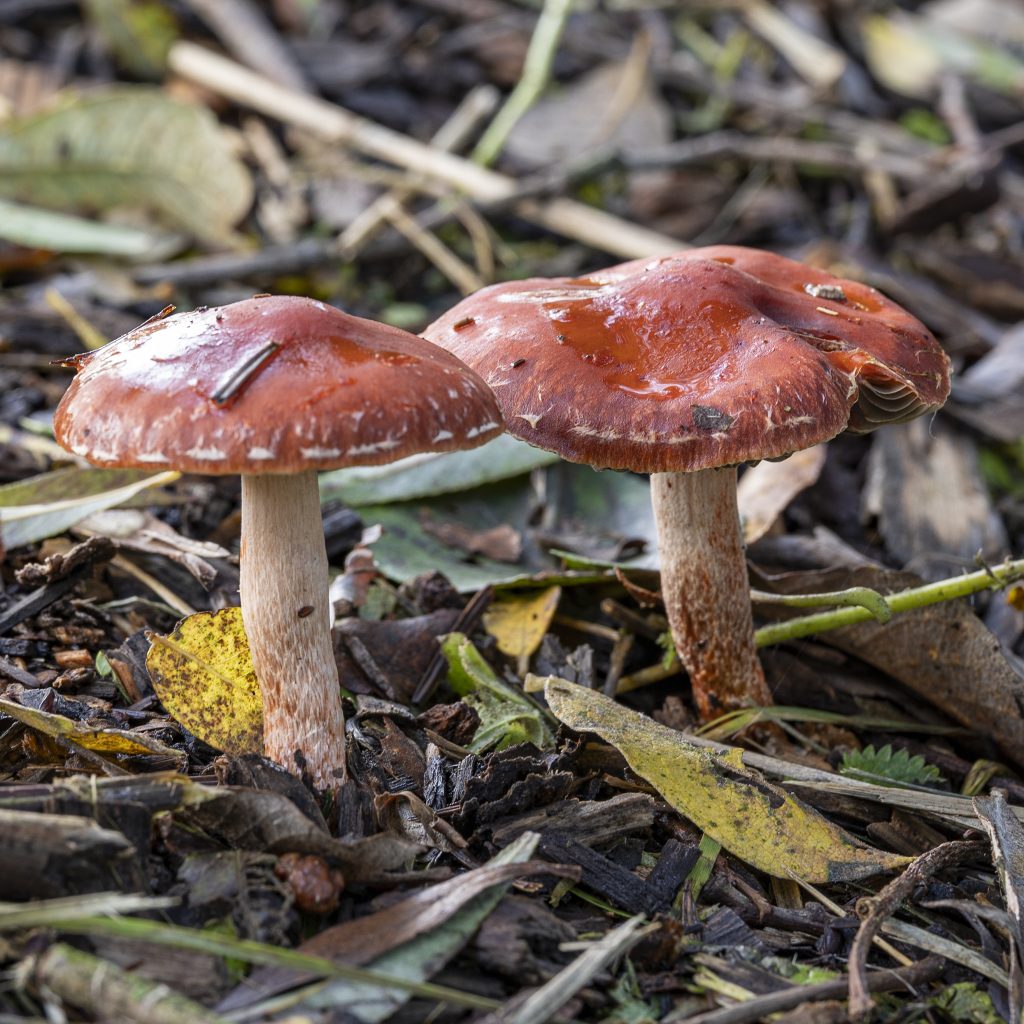
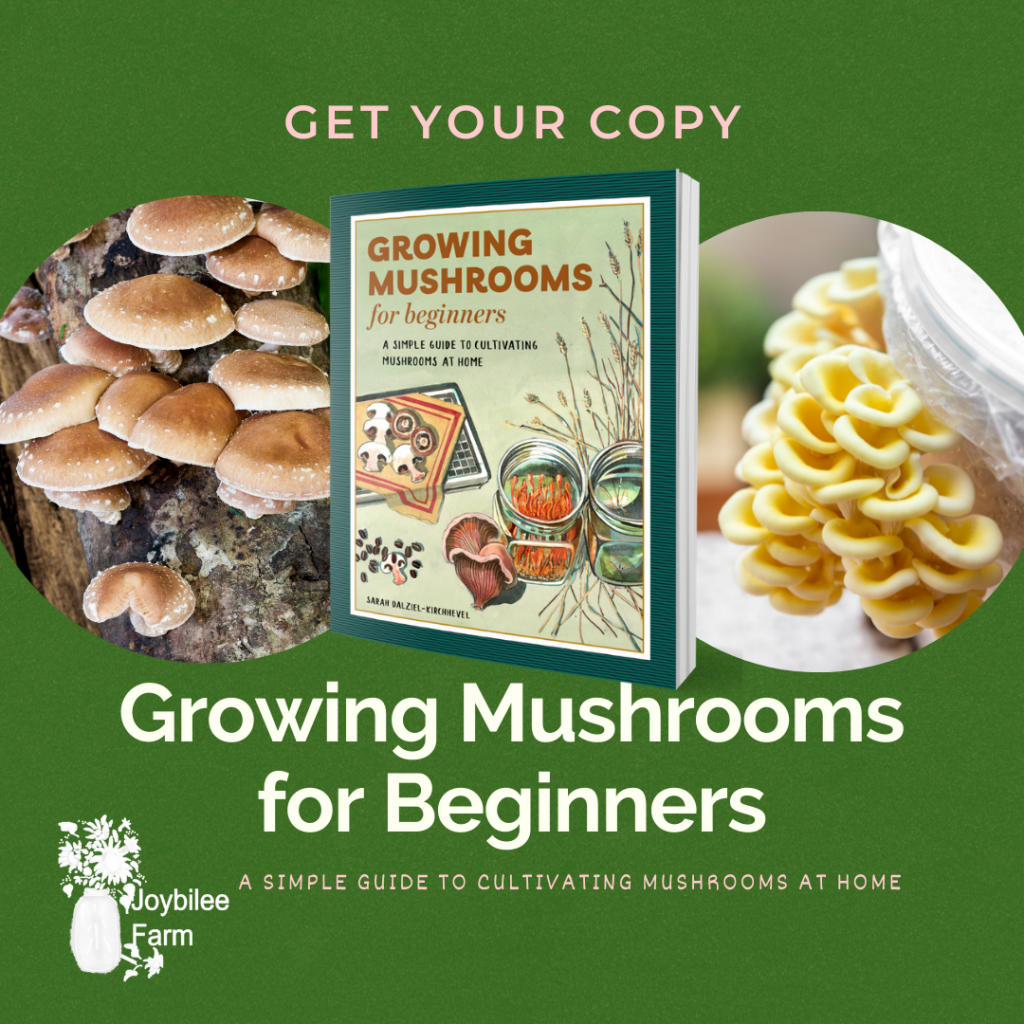


Leave a Reply